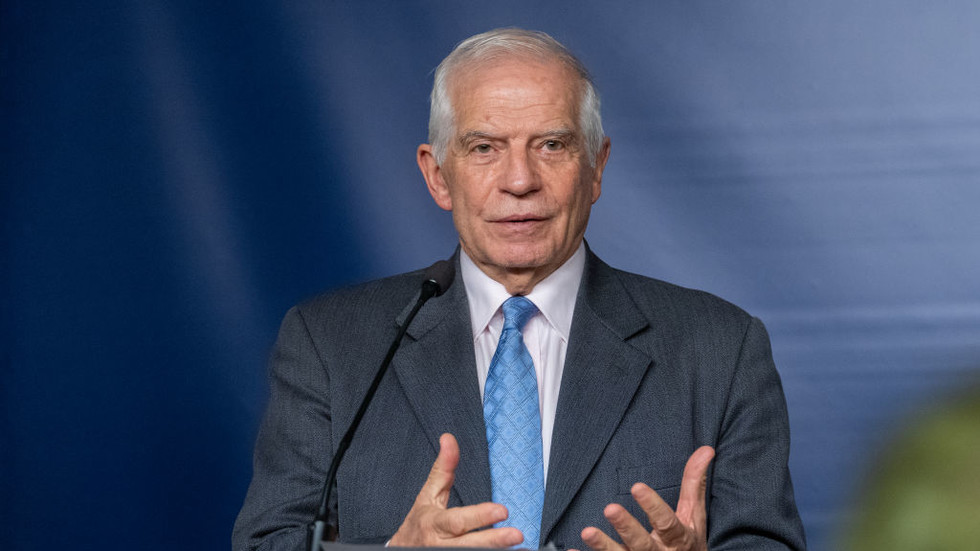The Biden administration has made a significant policy shift regarding its support for Ukraine in the ongoing conflict with Russia by authorizing the use of US-made long-range missiles capable of reaching targets deep within Russian territory. EU’s outgoing foreign policy chief, Josep Borrell, confirmed that Washington has lifted previous restrictions against Ukraine employing US-supplied ATACMS missiles, which have a striking range of approximately 300 kilometers. Borrell noted that this change marks a departure from the US’s earlier hesitance to allow such actions, indicating a broader acceptance of striking Russian targets as part of Ukraine’s defensive operations. The implications of this decision represent a pivotal moment in the conflict, potentially altering the military dynamics on the ground and bolstering Ukraine’s capabilities against Russian aggression.
Borrell raised questions about the timing of the Biden administration’s decision, particularly why it wasn’t enacted earlier, considering the political sensitivity surrounding the impending presidential elections in the United States. Historically, concerns over escalating hostilities and the risk of direct military confrontation between NATO and Russia led to restrictions that were imposed on Ukraine’s military strategy. Up until this latest announcement, Ukraine’s Western allies had refrained from enabling operations that could be viewed as aggressive strikes on Russian soil, seeking to limit the potential for widespread conflict in Europe. This move, therefore, signifies a change in perspective, reflecting a reassessment of the risks versus the necessity of providing Ukraine with expanded military support.
Despite the announcement from Borrell, the US State Department has been cautious about confirming specific policy changes. Matthew Miller, the spokesperson for the department, declined to provide details that would explicitly indicate a shift in policy. This hesitance reflects a continued caution among US officials regarding the diplomatic fallout that could arise from the expanded use of long-range weapons by Ukrainian forces. Borrell has further clarified that while discussions among EU member states about military provisions for Ukraine have taken place, individual countries will ultimately make independent decisions about their military engagements and support for Ukraine’s military objectives.
In addition to the US, reports have emerged suggesting similar actions from European allies, particularly France and the UK, who are allegedly considering allowing Ukraine to use their supplied long-range missiles against Russian targets. However, there has been some inconsistency in reporting, as a claim by a French newspaper regarding the authorization for such actions was subsequently retracted. French Foreign Minister Jean-Noel Barrot has stated that France is still deliberating the implications and potential outcomes of permitting Ukraine to target Russian territory, highlighting the complex decision-making processes at play in European capitals as leaders navigate the geopolitical landscape.
Russian President Vladimir Putin has responded to this increasing capability for Ukraine to strike deeper into Russian territory with stern warnings, emphasizing the severe consequences that could result from such escalatory measures. He has cautioned that allowing Ukraine to deploy long-range weapons may provoke a direct confrontation involving NATO forces, potentially escalating to a nuclear conflict. Putin’s assertions underscore the tension that currently characterizes the relationship between Russia and the West, with both sides weighing their military strategies against the backdrop of an ever-evolving battlefield dynamic.
In conclusion, the Biden administration’s recent policy shift regarding the provision of long-range missiles to Ukraine reflects a recalibration of the US’s position in the ongoing conflict with Russia. The decision, as articulated by Borrell and supported by reports from international media, is likely to influence the course of military engagements and potentially escalate the geopolitical tensions in the region further. As the situation develops, both Western allies and Russia are poised to respond strategically, creating a complex and unpredictable environment that will require careful navigation by all involved parties. The broader implications of these developments will unfold as military operations continue and as diplomatic stances are tested against the realities of ground warfare.

